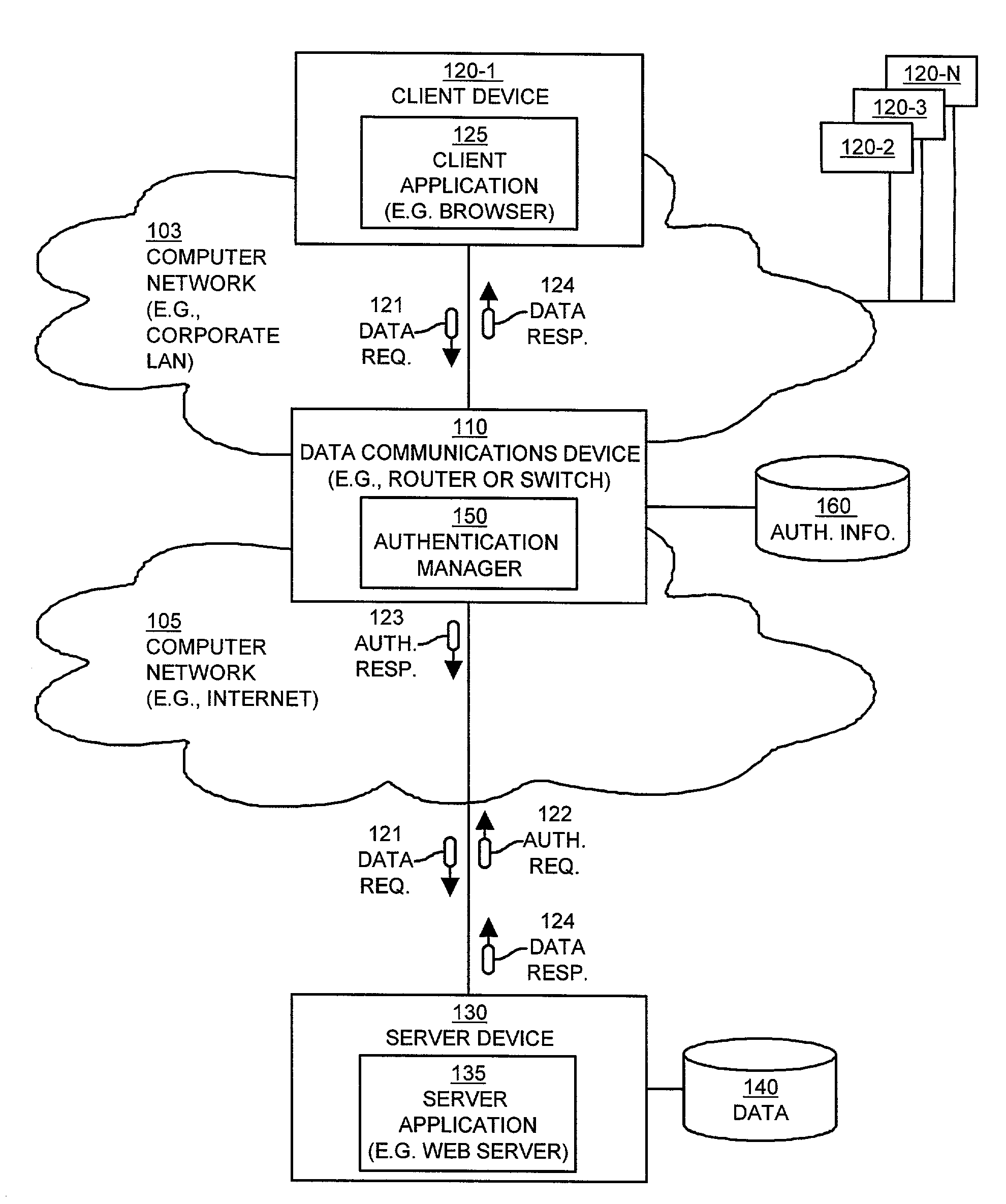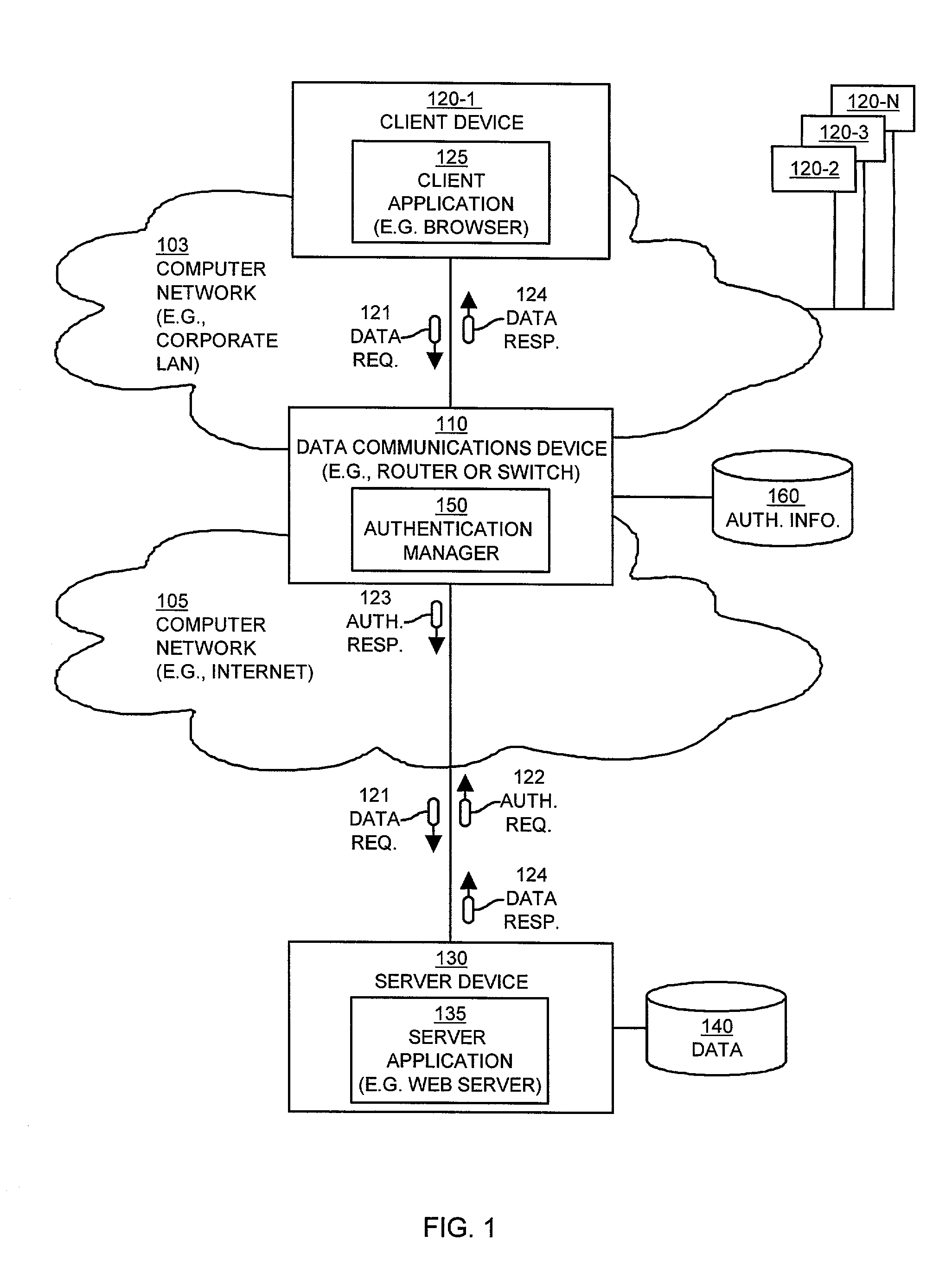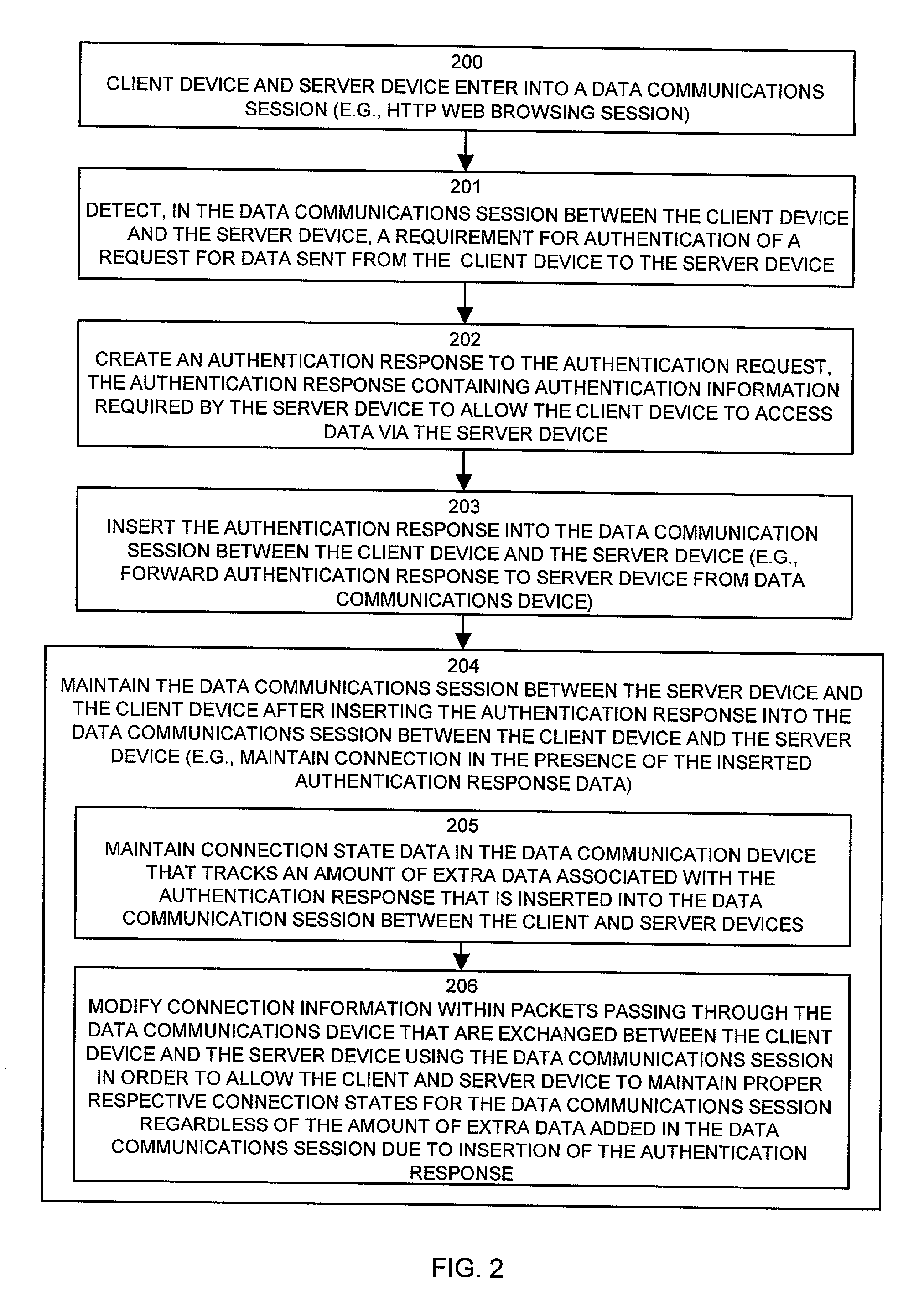Methods and apparatus providing automatic client authentication
a client authentication and client technology, applied in the field of methods and apparatus providing automatic client authentication, can solve the problems of user loss of individual valid username and password pairs, different arrangements of resources over a computer network, and inability to provide user authentication, so as to avoid disruption of data communication sessions
- Summary
- Abstract
- Description
- Claims
- Application Information
AI Technical Summary
Benefits of technology
Problems solved by technology
Method used
Image
Examples
Embodiment Construction
[0039]Embodiments of the present invention provide mechanisms and techniques for automatic authentication of users and / or hosts (i.e., client computer systems or devices) requesting access, over a network, to data or another resource via a server that requires user or user-host authentication prior to providing such access. In particular, embodiments of the invention are implemented within data communications devices such as an edge switch or router operating within a network that transfers network traffic (e.g., packets) traveling between client devices (e.g., a client computer system operating client Web browser software) and server devices (e.g., a server computer system operating web server software). An example of such a data communications device is an edge router or switch that couples a local area network (LAN) to a wide area network such as the Internet. A high level description of the general operation of embodiments of the invention will be provided next, followed by a mo...
PUM
 Login to View More
Login to View More Abstract
Description
Claims
Application Information
 Login to View More
Login to View More - R&D
- Intellectual Property
- Life Sciences
- Materials
- Tech Scout
- Unparalleled Data Quality
- Higher Quality Content
- 60% Fewer Hallucinations
Browse by: Latest US Patents, China's latest patents, Technical Efficacy Thesaurus, Application Domain, Technology Topic, Popular Technical Reports.
© 2025 PatSnap. All rights reserved.Legal|Privacy policy|Modern Slavery Act Transparency Statement|Sitemap|About US| Contact US: help@patsnap.com



